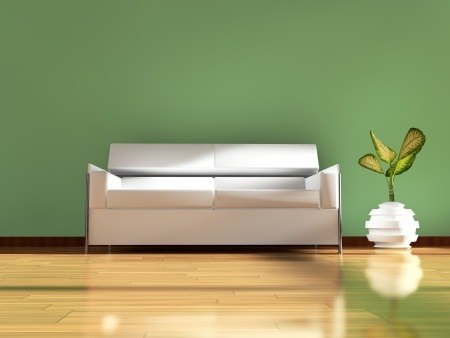posted by Custom Coatings, Inc. on February 3rd, 2016
5 Tips for Painting a Creative Work Space
Whether you think of it as a hobby corner or a full-fledged art studio, your creative work space deserves special attention. Color, layout, storage and inspiration are all critical elements for that design. This can be a huge undertaking depending on your home’s space, so it’s important to keep in mind that you have the skills of our residential painters if you don’t have the time to update the look and feel of your space.
Inspiration Station
What first gave you “the bug” for your artistic endeavor? Reach back to that springboard to draw inspiration for your design choices. If you or a fellow artist is a skilled residential painter, consider devoting a wall to a mural depicting your passions, whether it be a “forest” of knitting needles or a Parisian artist’s grotto. If photography is your passion, a grouping of framed black and white prints from early masters creates a striking design element, as can a shelf lined with vintage cameras. Writers might find one wall lined with cork board a suitable space for pinning up quotes from their idols, pages from old books, or postcards from a favorite author’s birthplace. Crafters often find the tools of the past inspiring, whether it’s a small display cabinet filled with antique thimbles, or some vintage embroidery hoops used as picture frames.
Form Follows Function
Storage for tools and supplies doesn’t have to be boring. Turn to beautiful or even offbeat items to stash the tools of your trade.
- A giant brandy snifter filled with thread spools adds color and whimsy to the sewing table.
- Antique cupboards provide functional but eye-catching space for organizing bolts of fabric or paints.
- Vintage postal cubbies contain hand tools, glue tubes and putty jars.
- Apothecary jars and vintage glassware are whimsical vessels for everything from pens to flash drives.
- Double-duty items are crucial in tight spaces. Ribbons can become curtains, propped-up bulletin boards might serve as both desks and note-holders, and ladders can be used for draping in-progress knitting projects.
Choose Your Hue
The colors to which you naturally respond will often serve as useful residential painting guides — both for what spurs your creativity, and what hampers it. You may find that white walls serve as the perfect “blank canvas” for uncluttered thinking, or conversely, that they make you feel too “blah” to continue your work. If you’re the type who needs jazz music and other stimuli to keep jump start your process, turn to a residential painter for tips on finding bright colors like red, orange and hot pink. When shutting the world keeps centered, however, a residential painter can apply earth tones, serene greens or soothing blues. Or make the walls themselves even more inspirational by covering them with chalkboard paint, allowing you to make notes and doodle to your heart’s content.
Banish the Business
Perhaps the most challenging design “element” of your creative space will be the absence of items, rather than the addition of them. Discipline yourself and your family members to think of your creative room as a space solely for your artistic work, rather than as a useful place to store extra boxes or to keep tax returns. There is nothing that can rob you of your willpower to focus on your creative side quite like a vacuum cleaner in the corner, or a stack of unpaid bills.
Layout Your Lair
When your creative work space isn’t a self-contained room, design elements become even more important cues for turning mere square footage into a real work space.
If you craft or write in your bedroom, consider rearranging furniture to create a “room within a room.”
- Put a horizontal bookcase on one side of your bed, which carves out distinct sleeping and working spaces.
- Push your bed forward into the room, using the back of your crafting station or hutch desk as a headboard, so that your creative work space becomes a hidden space behind the bed.
- Place a console table behind a couch in your living room to act as both as a design element and as your writing desk.
- Set your entertainment center placed mid-room to create a separate space for a sewing station on the other side.
- Press that little-used second closet or pantry in your bedroom or kitchen into service as a mini-office. Rolling tables, drop-down shelves and folding chairs are ideal for utilizing the space just in front of the closet during the day, while allowing you to tuck it out of the way at night. Turn to a residential painter to add color to those hard-to-reach spaces inside the closet.
Most importantly, your creative space is your personal playground. Even if your family vetoes pastels and “girly” prints in the rest of the house, let those flounces, paisley and pink run wild in your work space. This is your chance to let your taste for whimsy have free reign. Whether it be neon colors, silly movie posters, stuffed animals or offbeat collections, this is your space to show off — and to ignite — your creativity.
After reading this, you may have questions for your team of residential painters. If so, don’t hesitate to contact us so we can help you today. Call us at (828) 326-0953!




